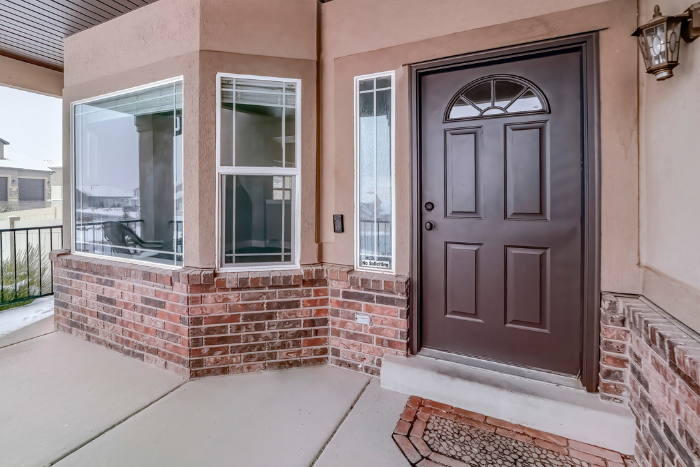
Homes with an unusual construction can be interesting to look at and exciting to live in, but also difficult to care for. Regular, appropriate maintenance is essential, often under the guidance of a structural engineer with relevant experience. To help you relax and enjoy your unusual abode, here’s our handy guide to protecting your non-standard home.
What Kind Of Properties Are Non Standard?
Any property built from non-standard materials is classed as having a non-standard construction. Generally, this means any property that does not have walls made of brick or stone, or that does not have a roof made of tiles or slates.
In a country with plenty of history and a diverse population, that’s not as rare as you might expect. All sorts of properties, both old and modern, can be classed as non-standard, including:
- Steel and timber framed properties
- Homes built from flint, straw bale, wattle and daub, or peat
- Modular and pre-fabricated homes
- Flat- roof homes
- Thatched roof homes
- Barn conversions
Most listed buildings are also considered non-standard thanks to the strict regulations governing how they are built and renovated.
If you own a non-standard home, you may need to take out specialist insurance. This is because properties with a non-standard construction can be more expensive to rebuild due to the materials required, or the specialist expertise needed to repair them.
Protecting Your Non-Standard Home: Maintainence
Looking after properties with a non-standard construction requires careful attention. Different property styles are built with different materials resulting in a unique appearance. As such, each will have its own structural strengths and weaknesses, leading to common faults and failure patterns.
Regular maintenance can help protect your home, ensuring you avoid accelerated deterioration that compromises structural integrity, thereby safeguarding against costly repairs. To promote the safety and longevity of an unconventional home, you will need to undertake consistent upkeep, appropriate to your property.
Timber framed buildings, for example, are particularly vulnerable to moisture and damp. Be sure to trace the source and rectify problems quickly. Look out for any signs of beetle infestation as well as structural problems or failing joints.
Maintaining a thatched roof property also requires special care. You will need to regularly inspect for signs of wear, addressing issues promptly and removing any debris to prevent water retention or decay. Apply appropriate fire retardants and biocides to deter pests and minimise fire risk.
In flat-roofed properties, you will need to watch out for water pooling and drainage issues. Apply a weatherproof coating to safeguard against UV rays and weather damage and regularly inspect for cracks and leaks.
Even modern, modular homes will require some form of regular maintenance. You may, for example, want to check the foundation for settling and ensure proper ventilation to prevent moisture build-up. Inspect plumbing, electrical and HVAC units and keep up with exterior and roofing maintenance.
Protecting Your Non-Standard Home: Insurance
One further, essential element of protecting your non-standard home is arranging appropriate insurance. This will involve taking out both buildings and contents insurance for your non-standard property.
Buildings Insurance is vital for non-standard properties due to their unique construction and potentially higher risk factors. It safeguards against unexpected costs arising from structural issues, material shortages, or intricate repairs, ensuring financial protection for the cost of any work.
OBF buildings insurance for non-standard properties can also include:
- Loss of rent earnings or temporary accommodation costs whilst buildings cannot be lived in as a result of an insured loss
- Fire Brigade charges up to €2,000
- Replacement of locks to safes, alarms or outside doors or windows following theft
Contents Insurance covers the cost of replacing any fixtures or fittings, along with any belongings in your home. This can help to safeguard your personal possessions against unforeseen events and losses. Owning a non-standard home can impact your contents insurance as the construction of your property may be deemed less secure than a regular-build home.
OBF contents insurance covers your personal effects and could include the following for a non-standard property:
- Personal money and credit cars up to €350
- Deeds, registered bonds or personal documents up to €750
- Domestic oil in fixed fuel tanks up to €750
Choosing The Right Insurance For Your Non-Standard Property
With care and regular maintenance, you can enjoy your unique property for many years to come. Whether you own a historic home, a new property built from scratch, or you have simply added an extension with a flat roof, ensuring appropriate protection helps you relax and enjoy your home to the fullest.
By safeguarding your home with tailored insurance, you can address the specific risks and challenges associated with your home’s construction and protect against any extra costs involved in rebuilding or repairing a non-standard home such as yours.
For expert advice on how to protect your property with customisable non-standard home insurance, contact the team of experienced insurers at OBF Insurance. We’re always on hand to guide you through the potential issues that standard home insurance policies might overlook.